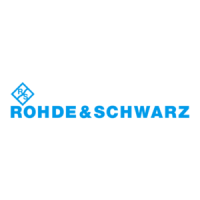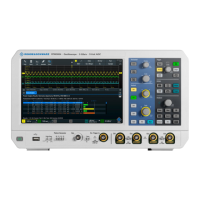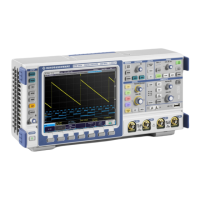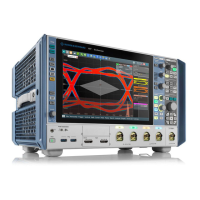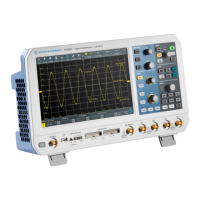Power analysis (option R&S RTM-K31)
R&S
®
RTM3000
348User Manual 1335.9090.02 ─ 09
The power results are defined as follows (see Table 14-1):
Table 14-1: Power results
Result Name, Unit Formula Description
Apparent Apparent power
||S|| (VA)
||S||= V
RMS
∙
I
RMS
(averaged over N cycles)
|S| is the magnitude of the vector
sum of real and reactive power.
Active Real power
P (W)
P = V
INSTANTENEOUS
∙
I
INSTANTENEOUS
(averaged over N cycles)
Energy of the system that can be
used to do work.
Reactive Reactive power
Q (VAr, Volt-
Ampere reactive)
Q = ||S||sin
φ
Power flow that is temporarily
stored in a system because of the
inductive and capacitive ele-
ments.
Factor Power factor
P
Factor
P
Factor
= ||P|| / ||S|| Measure of the system efficiency.
The value varies between -1 and
1.
Angle Phase angle
φ (°)
φ
= acos (P
Factor
) Phase angle between the current
and the voltage sine waves.
Remote commands are described in Chapter 17.12.11, "Quality", on page 735.
14.4.1.2 Configuring power quality measurements
For details of the configuration settings, see Chapter 14.4.1.3, "Quality settings",
on page 349.
1. Press the Apps Selection key. Tap "Power Analysis".
2. In the "Input" tab, select "Consumption".
3. Connect the differential voltage probe and the current probe to the oscilloscope.
It is recommended that you use a high-voltage differential probe for measurements
at the DUT power input.
4. Demagnetize the current probe. For details, see the user manual of your current
probe.
5. Select the "Tools" tab.
6. Connect the probes to the R&S RT-ZF20 power deskew fixture.
7. "Deskew" the probes and adjust the "Zero Offset".
8. Disconnect the probes from the R&S RT-ZF20 power deskew fixture.
9. Connect the probes to the DUT as shown in the "Quality" dialog:
● Connect the positive (+) signal socket of the differential voltage probe to the
line of the AC input.
● Connect the negative (-) signal socket of the differential voltage probe to the
neutral of the AC input. Make sure that you use a common ground.
Input power measurements

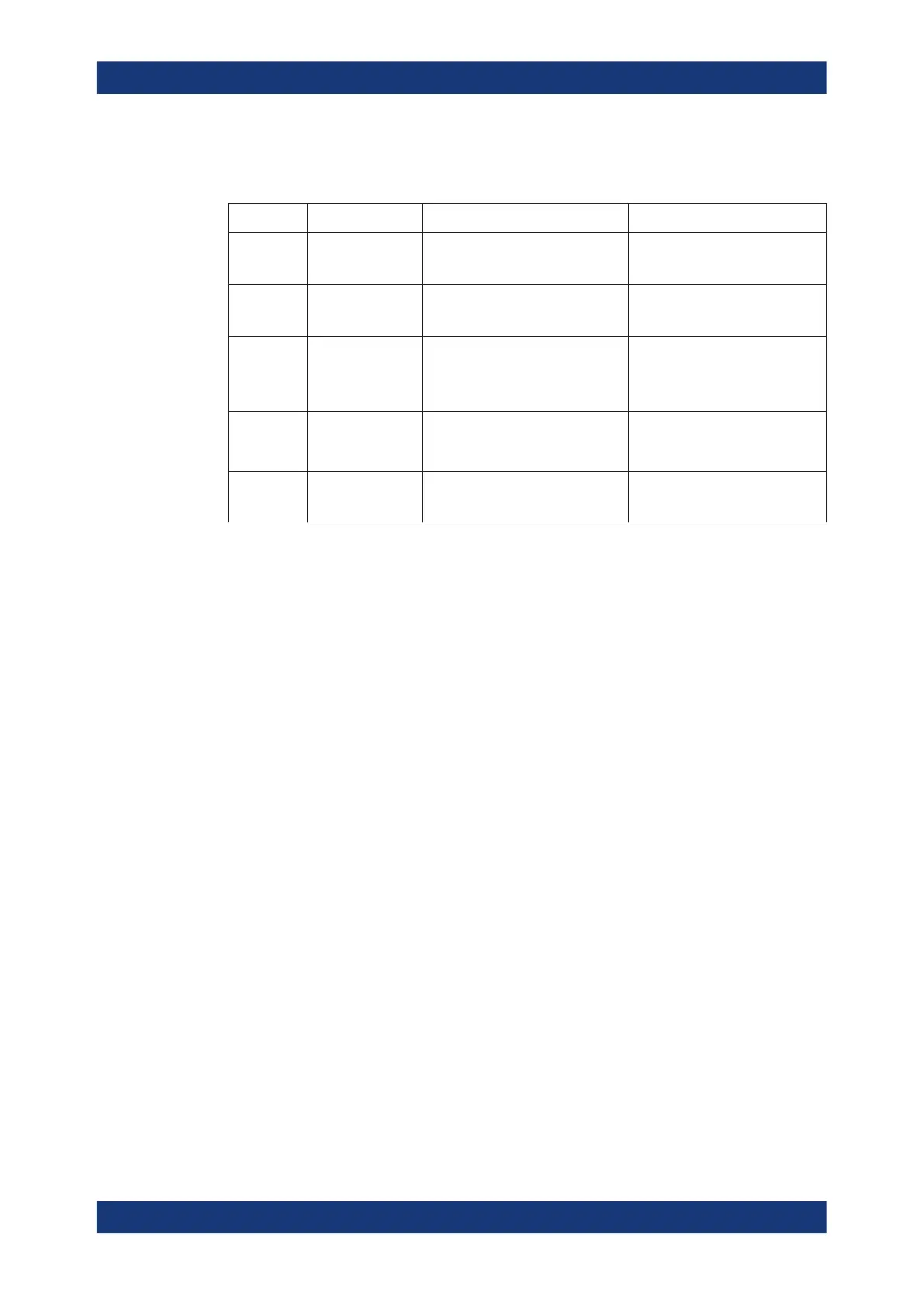